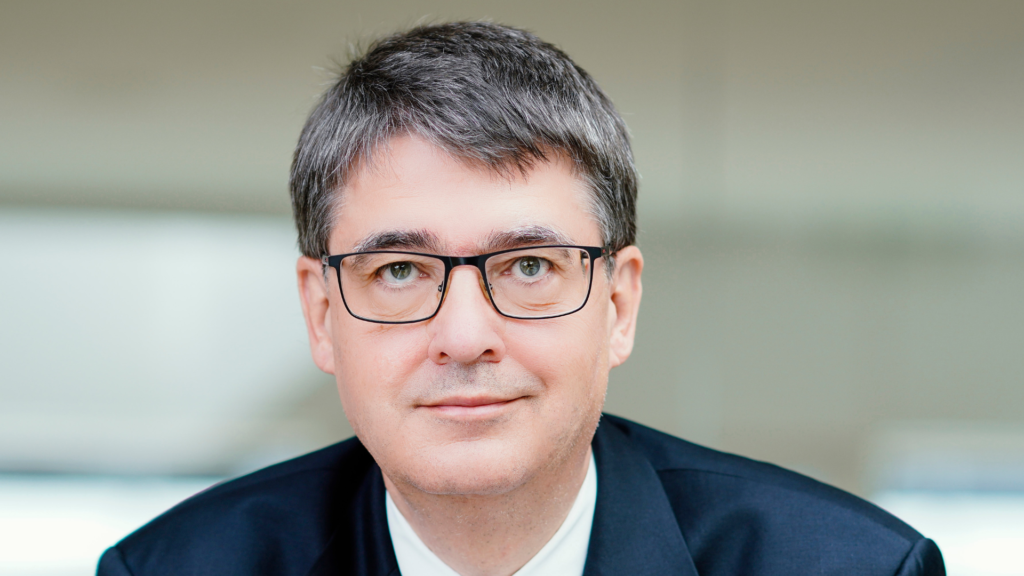– The Future of Cancer Therapy –
In this first issue of the eBeam4Therapy newsletter, we start by looking at how cancer research and treatment is expected to advance in 2023. Then, we have a look into the near future of radiation oncology, with some insights from Prof. Dr. Michael Baumann, the Chairman and Scientific Director of the German Cancer Research Centre. Finally, we take a deeper dive into the eBeam4Therapy project, with some important announcements and happenings around our research in the coming months.
The eBeam4Therapy Project

eBeam4Therapy is a 3-year project funded by the European Union that aims to demonstrate the technological & commercial feasibility of laser-plasma accelerator technology to reliably generate very high energy electrons in the ideal energy range for radiotherapy applications.
Led by the Weizmann Institute of Science and Acceler8 Venture Builder, eBeam4Therapy is on a mission to revolutionise the way we treat cancer by developing a safe, compact and cost-effective approach to radiation therapy. This could enhance therapeutic efficacy, providing improved outcomes and a better quality of life for patients, while also ensuring treatment accessibility across the globe.

2022 was a particularly significant year in the pharmaceutical industry, with the United States’ Food and Drug Administration (FDA) issuing 40 drug approvals for oncology indications – 12 of which were new, first-in-human molecules.
In light of this encouraging development, the American Association for Cancer Research (AACR) recently spoke with a group of oncology experts to gain some insight into how cancer research and treatment can be expected to advance in 2023.
The article focuses on five primary areas within the oncology sector: cancer immunotherapy, precision medicine, cancer prevention and early detection, patient advocacy, and cancer disparities research.
Check out the full article here.
A Word from the Expert
An Interview with Prof. Dr. Michael Baumann

The eBeam4Therapy team got in touch with Prof. Dr. Michael Baumann, Chairman and Scientific Director of the German Cancer Research Centre to gain some insight into how we can expect radiotherapy to evolve in the near future, and what role VHEEs will play in this domain.
Throughout his illustrious career, Prof. Dr. Baumann has received numerous honours for his efforts in the radiotherapy field, including the Michael Fry Research Award of the Radiation Research Society and the Breur Gold Medal and Regaud Medal Award of the European Society for Therapeutic Radiology and Oncology.
Here’s what he had to say:
Q1. What changes do you think will shape the evolution of the radiotherapy domain over the next 10 years?
From a societal perspective, we are seeing a global increase in patient numbers coupled with an increasing bottleneck for financial resources in health systems. We will also continue to see an increase in patient age, and thus, an increase in co-morbidity. These trends are accompanied by a higher demand of patient participation, involvement and transparency.
I would also expect the next 10 years to bring about a higher demand for the latest technologies and further global, perhaps even national, inequalities in access to radiotherapy, particularly advanced radiotherapy. Despite this, radiotherapy can offer very cost-effective cancer treatment and one can hope that this is recognised in future policies.
From a technological perspective, I would expect a growing demand for image-guided high-precision technologies, the numbers of fractions decreasing, and dose per fractions increasing.
Q2: Where do you see that new technologies are most urgently needed to improve cancer therapy for both patients and healthcare providers?
There are eight applications where new approaches are most urgently needed:
1. Cost effective, reliable and optimally easy to use machines which can be utilised in currently underserved regions of the world, perhaps with remote control functionalities.
2. Ultra-fast and potentially remote planning to allow adaptive approaches, involving the utilisation of AI.
3. Fast adaptive beam shaping, involving the utilisation of AI.
4. Increasing image-guidance, involving the utilisation of AI.
5. The use of robotics in patient positioning, among other applications.
6. Complete feed-back loops. Utilisation of AI.
7. Further increasing precision in particle beams, among other factors.
8. Ultra-high dose rates (e.g. FLASH).
Q3: In which cases do you think that the future therapeutic use of very high energy electrons can bring significant benefits over the currently available RT approaches?
Provided that high energy electron radiotherapy causes significant advances in any of the 8 application fields mentioned above, radiotherapy based on very high energy electrons could be of major interest for policymakers, providers, and the community.
Q4: Closing comments
The majority of treatments will be part of a multidisciplinary approach. Radiation Oncology will only be as good as other high-quality components in place, such as diagnostics, pathology, and surgery. Treatments will be increasingly centralised in Circulating Cancer Cells (CCC), and these may run satellites (e.g. for palliative radiotherapy and easy technique treatments).
There is considerable hope that within the next 10 to 20 years, cancers will be detected earlier than today, mainly as a consequence of biology – through the use of biomarkers and polygenic risk models, among other things. This might serve to significantly change the typical patient cohorts in radiotherapy.
Prof. Dr. Michael Baumann – DKFZ Chairman & Scientific Director

What lies in store for the radiotherapy domain in the coming years?
From technological advances in dose delivery, new forms of irradiation, and the advent of artificial intelligence, to machine compactness, global healthcare access, and more precise tumor imaging, the radiotherapy landscape is expected to make some noteworthy strides in the near future.
We discussed all of this and more in the very first Insights article, published on the EB4T website earlier this year. The following is an excerpt from said article:
“One of the notable developments in oncologic treatment, that has gained significant attention over the last two decades, concerns the possibility of using very high energy electrons (VHEE) – in the energy range of 100 to 250 MeV – in radiation therapy for cancer. This has the potential bring about several advantages when compared to the use of high-energy photons – the most commonly used modality in clinics today.”
Want to learn more? Read the article in full here.
Upcoming Engagements:
LPAW 2023: Lagos, Portugal

Members of the EB4T team will be attending the Laser and Plasma Accelerators Workshop (LPAW) 2023 in Lagos, Portugal between 6th and 10th March. The LPAW series is one of the leading workshops in the field of plasma-based acceleration and radiation generation
EB4T Meeting: Lisbon, Portugal

The EB4T consortium will gather in Lisbon to discuss the status of the project both from technology and commercial development perspectives, to discuss project milestones, and to review the plan for the next 6 months. The event will be attended by representatives of the EB4T consortium partners, Acceler8 Venture Builder and the Weizmann Institute of Science.
Interested in our Research?
We want to hear from you! Our research team is busy defining the next generation technology in the laser plasma accelerator domain. This will allow us to make a crucial step forward towards applications requiring VHEEs at more demanding parameters.
Want to join this ecosystem? Get in touch with us at [email protected] or drop us a message through our social channels. You can also subscribe to future editions of this newsletter here.
